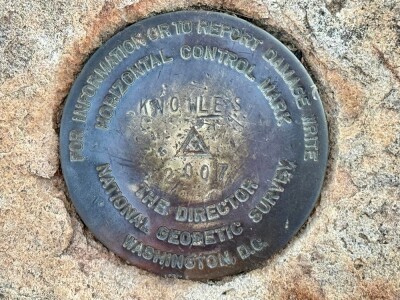Does your transportation or civil engineering or surveying business depend on 2D workflows? Are your customers still asking for line work deliverables extracted from traditional total station and GPS surveys? If the answer is yes, you might be skating on some very thin ice. Just around the next bend is a monster waiting to eat you.
Dramatic advances in mobile scanning and mapping technologies are disrupting traditional surveying and engineering workflows. We can quibble about accuracy and specifications and but the short answer is that though the technology is expensive, it works; it is here to stay and the value proposition is very compelling for many projects. However, the business of mobile scanning and mapping is every bit as disruptive as the technology.
Transition from variable cost to fixed cost business models
Mobile scanning, surveying and mapping turns data collection from a variable cost business to one where fixed costs dominate. It used to be if you had a contract to survey 20% more corridor mileage next year, you had to increase headcount by 20% and maybe buy some more equipment . The equipment cost would be less than the annual compensation cost for the crew too. With today’s mobile systems, most of the cost is up front. There is a $250k to $750k investment to get started but after this investment, the incremental or marginal cost, measured on a per mile basis is very low. Mobile scanning systems can collect more data in a day than a survey crew can collect using traditional survey in weeks or months.
Billion dollar databases
So what happens to a business when costs shift from variable to fixed. New models emerge, that’s what. Firms with access to capital can crush smaller, weaker competitors with these new models. Subscription models for data become more compelling. For example, NAVTEQ is spending a lot of money to scan the world’s transportation infrastructure in 3D. Why? NAVTEQ understands the database is worth billions for next generation vehicle navigation systems.
Good sized engineering firms like Aerial Data, David Evans & Associates, Survey and Mapping, WHPacific, Woolpert, and others have already made some serious bets in this market. Savvy, entrepreneurial surveying firms like Terrametrix and Sam O. Hirota are also out leading this charge.
Capture once, sell many times?
Another option that opens up is capture once, sell many times. If the data capture is fast, safe, and accurate, then the work product can be repurposed. For example, there seems to be no good reason that the right-of-way department, the engineering department, the GIS department, the road surface analysis department, the emergency response department, the wide-and-heavy-and high clearance permitting department, the risk management department, etc. can’t all use deliverables extracted from the same acquisition database. Software to automate feature extraction is headed this way too. (Last week I saw a demo from Israel-based Tiltan that was shockingly fast and good.) I can’t wait to see the latest software from Autodesk, Bentley, Certainty3D, ClearEdge3D, CSA, ESRI, Innovmetric, Kubit, PinPoint and Pointools and others.
Next Steps
Engineering firms, survey firms, construction companies have choices. One route is to take the plunge and buy the equipment and get trained. This may be most compelling to organizations with LIDAR and laser scanning experience. Another path is to partner with organizations that have the capability already and subcontract the data collection. Of course, there’s always the option to do nothing and hope that this is a fad that goes away. Hmmm. I used to have a supervisor who once told me that email would go the way of CB radio. Fortunately he came to his senses.
Continue the conversation at SPAR 2010
We’re going to continue this conversation at SPAR 2010, February 8-10 in Houston. Immediately outside the conference venue, you can see mobile data collection rigs from earth-eye, Optech, StreetMapper/Terrametrix/GeoDigital, Riegl, TITAN, Topcon and Trimble. See these units first hand and decide for yourself. We’ll continue the business conversation inside where the discussions are sure to be lively.
Don’t miss the mobile scanning boot camp moderated by Lincoln Cobb, Technology Facilitator, Federal Highway Administration and led by Raymond Mandli, President, Mandli Communications.
Attendees will learn:
- Explanation of GPS, IMU and DMI components
- Safety, schedule, cost and output benefits
- Project planning particulars
- Software and storage solutions
- Relevance of point density and spacing correlated to speed of vehicle
- Accuracies achieved compared with other data capture methods
- Influence on GIS, engineering maintenance management and inspection systems
- What resources firms need to implement it
- Where to get more information on these topics





